
Wondering where to go on your winter vacation? How about a picturesque old village in a dramatic landscape right on the Sea of Japan? Japan’s west coast gets plenty of snow, seafood of the highest quality is available in abundance. How about Hiruga Village, Mihama City, Fukui Prefecture? From Osaka Station, it’s about two and a half hours to Mihama Station, from there take the bus.
Google maps features plenty of photos of that scenic village set against a rugged coastline.
None of them come close to the elegant, poetic winter images Daisaku Kimura, one of Japan’s most celebrated cinematographers, shot of the village for the 1985 movie Yasha.
Yasha being a yakuza movie, there is plenty of drama entering the remote fishing village, drama spilling over from the violent yakuza grounds in Osaka’s Minami.
All the main characters in the movie originate from Osaka and they all are in the fishing village for their very own reasons.
When talking about Osaka however, they all simply refer to Minami. Minami translates to South but in the context of the movie, South denotes the Namba / Dotonbori area in southern Osaka. Traditionally the yakuza hotspot in Osaka, at least according to the movies.
Table of Contents
Yasha (Japan, 1985) 夜叉
Shuji (Ken Takakura) is a hard-working fisherman. Having arrived at the village about 15 years earlier, he is now one of the main fixtures of the fishing community. If there is any trouble, like, say, a fisherman getting lost at sea, Shuji will take care of the matter.
None of the villagers have any clue about Shuji’s past. Nor do they care. Those are sturdy, weather-beaten fishermen, hard drinking for sure but they respect the privacy of an outsider who has proven himself over and over again to be a worthy member of the tight-knit community.
The viewer however is let in on Shuji’s past. He had been a warrior in the Osaka gang wars back in the day. Quite a fierce warrior, he had racked up a considerable body count using his traditional short Japanese sword.
To international audiences, Ken Takakura, the actor playing Shuji, might be best known for his role as police officer in the 1989 Ridley Scott movie Black Rain. In Japan, however, Ken Takakura has been the perhaps most recognized face in the yakuza movie genre for the last 50 years.

One day, Shuji (Takakura) fell in love with Fuyuko, a girl working at his favorite coffee house. The coffee house proprietor, well versed in the ways of southern Osaka, warned her, telling her, “He is a very nice person, yes, but he is a serious yakuza.” Fuyuko (Ayumi Ishida) falls for Shuji anyway – but she wants him out of the yakuza business.
By that point, Shuji himself wanted out. The Osaka gangs had entered the shabu trade and Shuji hated shabu. Shabu being methamphetamine, a powerful stimulant drug.
The drug had killed his younger sister. The sister with whom he had survived the final days of WWII after their parents were killed in an American bombing campaign. The two of them stole food together at the black market just to stay alive. But then, later, she fell for shabu and the drug killed her.
To get away from it all, the gang wars, the killings and the shabu in Osaka, Shuji and Fuyuko had moved to the coastal fishing village, Fuyuko’s home village. This in itself could have been a happy end. But it’s only the beginning of Yasha.
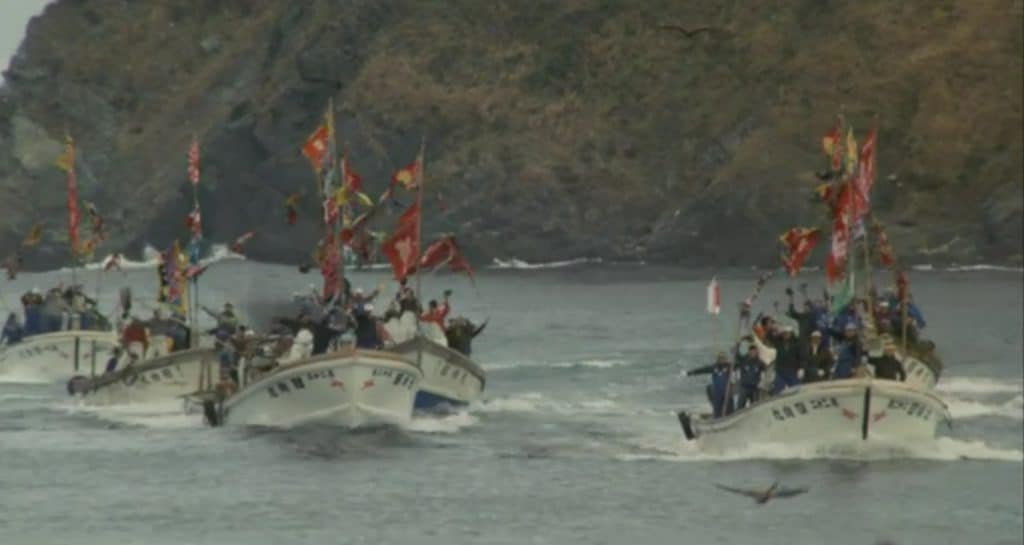
Keiko and Yajima
One day, a young woman, mother of a small son, arrives in the village. Keiko is her name and she’s from Osaka. From Minami, to be correct.
There are many ways to spell the name Keiko in Japanese kanji characters but her name is spelled 蛍子, meaning “child of the firefly”. Accordingly, she opens a small izakaya bar in the village named Hotaru (Firefly). Hotaru being one of the pronunciations of 蛍, the first kanji in her name.
Keiko (played by Yuko Tanaka) is a beautiful young woman and her izakaya bar quickly attracts all the men of the village. Including Shuji.
But then, her former lover and pimp, Yajima (Takeshi Kitano) also shows up in the village. He’s a ruthless Minami guy, a gambler addicted to shabu. He takes up residence at Keiko’s bar.
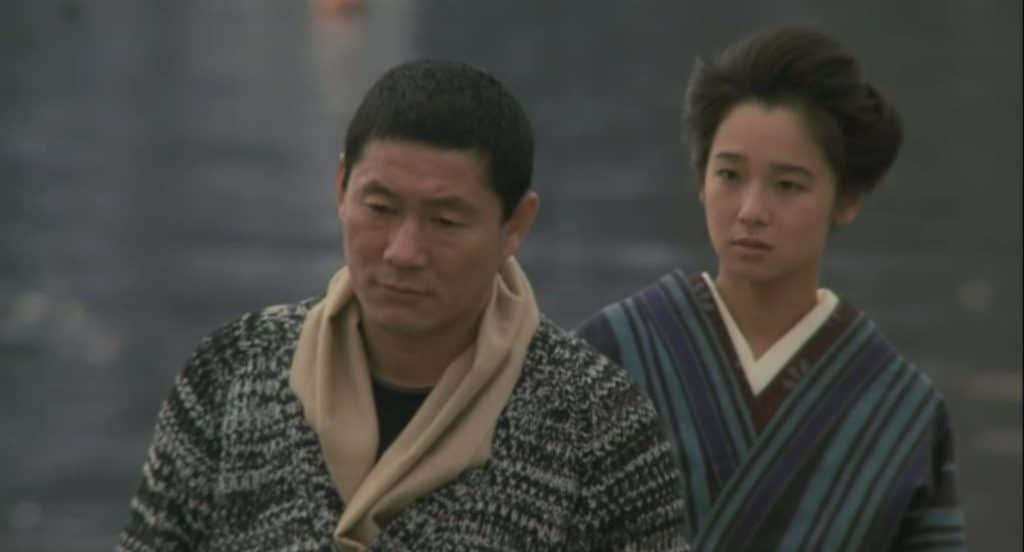
Takeshi Kitano and Yuko Tanaka
Soon, he wins the fishermen over with his incessant talking and his all-night gambling. Soon, the fishermen also begin to buy shabu from him, the only way to keep up with the nightly entertainment sessions he has to offer.
Predictably, the bank accounts of the fishermen are soon depleted. Angry wives go haywire after seeing the family bank books, chasing their husbands through the village streets. By then, the fishermen are addicted to shabu. They need more and the only place to get it is Keiko’s Hotaru Bar.
Time for Shuji to step in. Following a drugged-up rampage by Yajima through the village, the two face up. Shuji wins the fight but not without Yajima slashing the back of Shuji’s dress. A large yakuza tattoo becomes visible to all the villagers watching the fight.
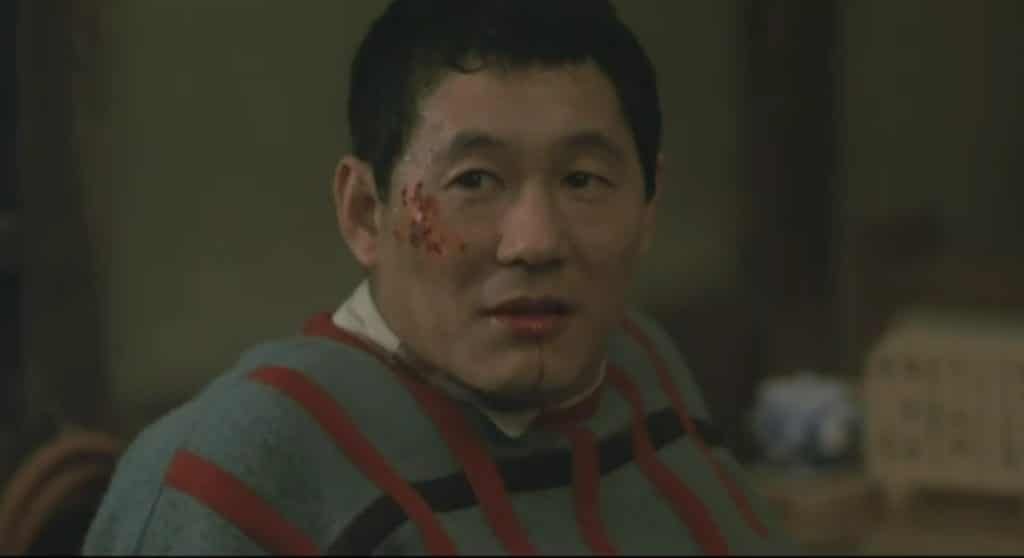
Yajima suddenly needs to return to Osaka. Not because of the fight he lost to Shuji. The Minami yakuza wants to have a word with him. Unpaid debts.
Keiko knows that Yajima is in grave danger now and she implores Shuji to go to Osaka to save him. She’s through with Yajima, she wants him to be out of her life… but she knows that his life is at stake and wants to save him one last time.
Shuji, by then enamored to Keiko (without ever wanting to give up the deep, trusting life with his wife), decides to do Keiko the favor she asks for.
Shuji goes to Osaka where he is still a revered character in yakuza circles. Can he save Yajima? You will have to watch the movie by yourself to find out.
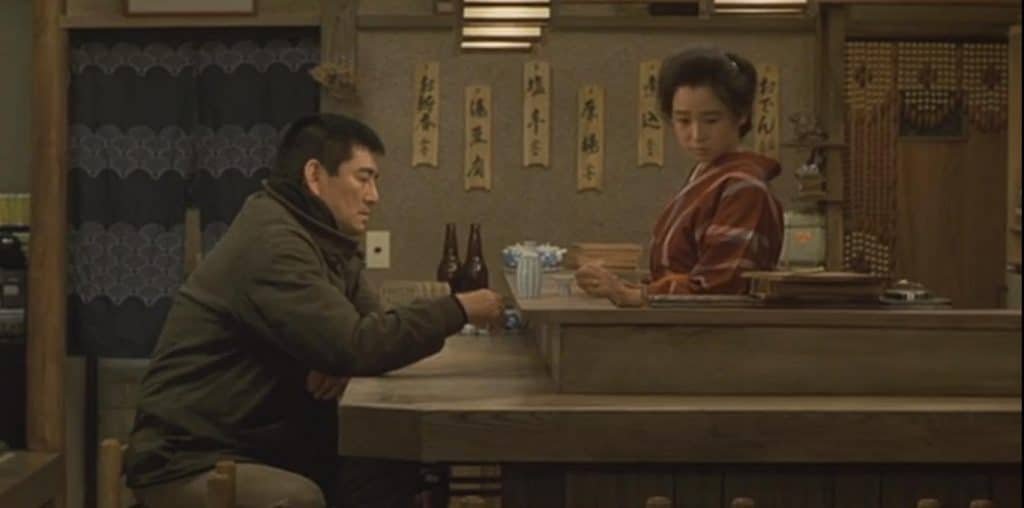
The Title
The word Yasha is the Japanized version of the Hindi word Yaksha. In old India, Yaksha were natural spirits, already appearing in the earliest teachings of Hindi culture. They could be both good-natured and mischievous.
In Buddhism, Yaksha sculptures often serve as loyal but fierce Buddhist temple guardians with ogre-like features. Their ugly faces reflecting the sins they had committed in a previous life as a human.
Japanese yakuza culture embraced the Yaksha / Yasha. They embodied everything yakuza stood for – extreme loyalty to their leaders, fierceness to the point of total ruthlessness, and yes, a sinful past extended to a sinful presence.
Thus, Yasha tattoos are very popular among hardcore yakuza. Shuji, Ken Takakura’s character in the movie wears exactly such a tattoo on his back. During his fight with Yajima, this tattoo is visible to all villagers as well as the movie viewer.
Just that the elaborate Yasha image on Shuji’s back doesn’t depict an ogre. In close-ups later in the movie, the face of his Yasha is revealed to resemble the face of Keiko.
Insinuating, in a way, that Shuji represents a higher force protecting Keiko. A guardian angel with a sinful past.
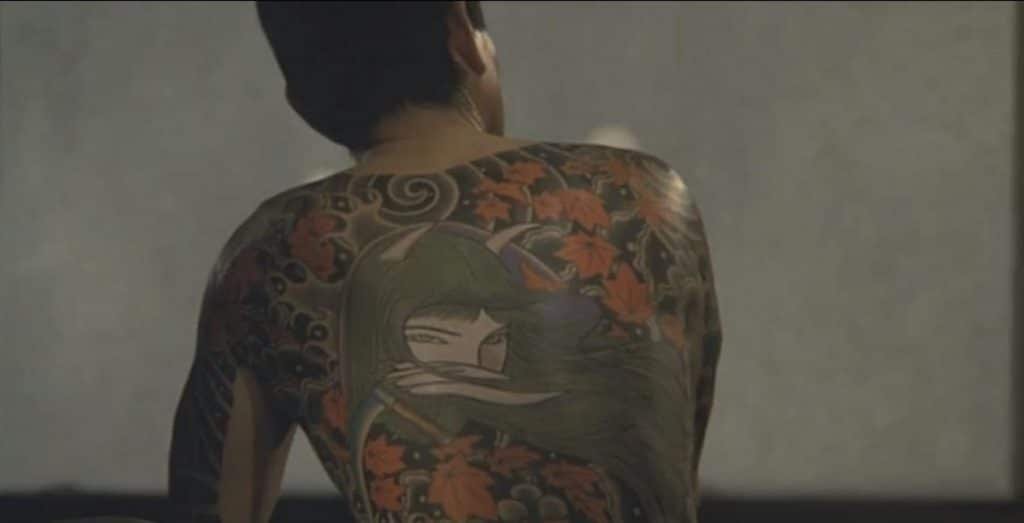
In English-language territories, the film was originally released with the title Demon.
An easy and legit translation of the word Yasha to be sure but a translation that in no way reflects the deep and varied meanings of the movie titleYasha.
The Production
By the mid-1980s, hundreds of yakuza films had been released. Many of them romanticized the gangster life while others featured the gritty and violent sides of the post-war yakuza gang wars (most famously Kinji Fukusaku’s Battles without Honor and Humanity series (1973 – 1976).
But what about a movie showing true emotions while being set in an unusually beautiful location? A yakuza movie to be sure… but a tad different.
A group of film folks came together to produce exactly that movie. Consisting of director Yasuo Furuhata (1934 – 2019), cinematographer Daisaku Kimura and producer Seichi Ichiko, they were a trio with extensive experience in the fields of samurai and yakuza movies. The cream of the crop of actors in the field joined them.
Together, they former an independent production company for only one movie, named Group Encounter. They approached Toho, Japan’s largest movie studio and were granted a reasonable budget. Later on, Toho would take care of the distribution of the film.
The setting and location were soon decided: the village of Hiruga, Mihama City, Fukui Prefecture in the winter.
Only then, a writer for the story was sought out. Tsutomu Nakamura, who had already penned a number of legendary samurai movies including some of the entries in the Lone Wolf and Cub series in the early 1970s, took on the job and came up with an original screenplay.
Shooting started on Christmas Eve 1984 in Hiruga Village, Fukui Prefecture. By then, Keiko’s bar had been erected for the movie on an empty lot next to Hiruga Bridge, covering the gateway of Wakasa Bay (Japan Sea) to inland Lake Hiruga.
All other movie locations were original local settings. Hiruga Harbor, Tsuruga train station… cameraman Daisaku Kimura got the best out of each of the locations.
Osaka Locations
While all the main characters are rooted in Osaka, real images of Osaka show up only late in the movie.
Shuji (Ken Takakura) takes the train to his old battlegrounds trying to save Yajima. Riding the Hokuriku line train, he arrives at Osaka Station first. The movie makers used the opportunity to shoot a great view of Osaka Station in Umeda, seen beyond the Yodo River with the Marubiru (Round House Building) and the Hankyu Department Store in clear view.
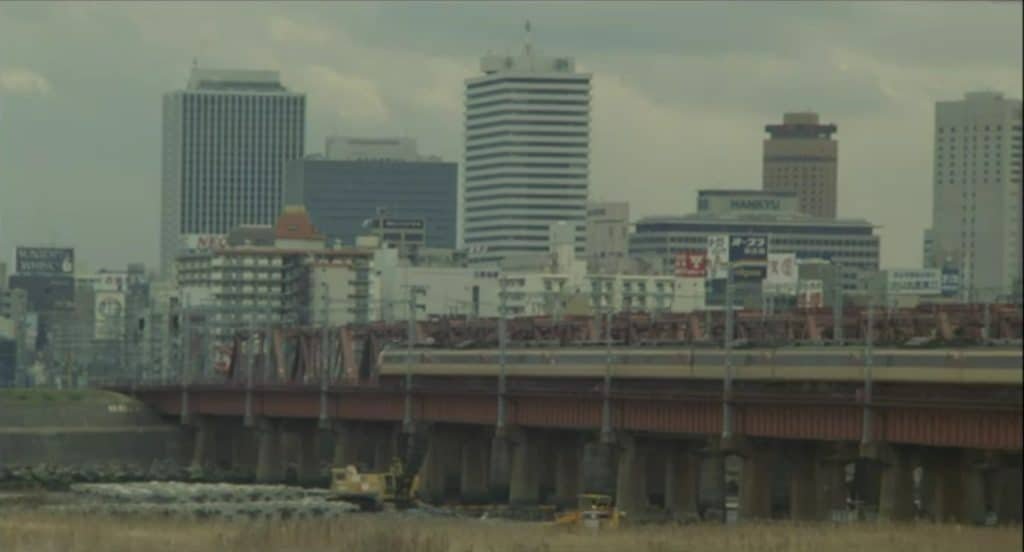
Films shot in Osaka tend to focus on the southern areas of the city like Namba / Dotonbori and the homeless area of Kamagasaki. Umeda, the northern center of Osaka is a location just as movie-worth but receives only rare exposure.
Taking the Osaka subway, Shuji son arrives at Namba and heads over to Dotonbori. A major tourist attraction for sure but an old yakuza battleground just as well. In the movies for sure but in reality just as well.
Right at the time of the movie shooting, a gang war between competing yakuza faction took place in the area.
The film team decided to shoot the scenes of Shuji walking through the backstreets of Dotonbori guerilla-style, without any official legal permit.
Applying for a shooting permit might have led to the information of Ken Takakura being present in Dotonbori leaking out.
Ken Takakura, the perhaps most prolific and certainly most famous yakuza movie actor had portrayed yakuza of all stripes, at times as quite questionable characters.
In the heated situation of the time, the film team didn’t want to risk any potential attack on Takakura.
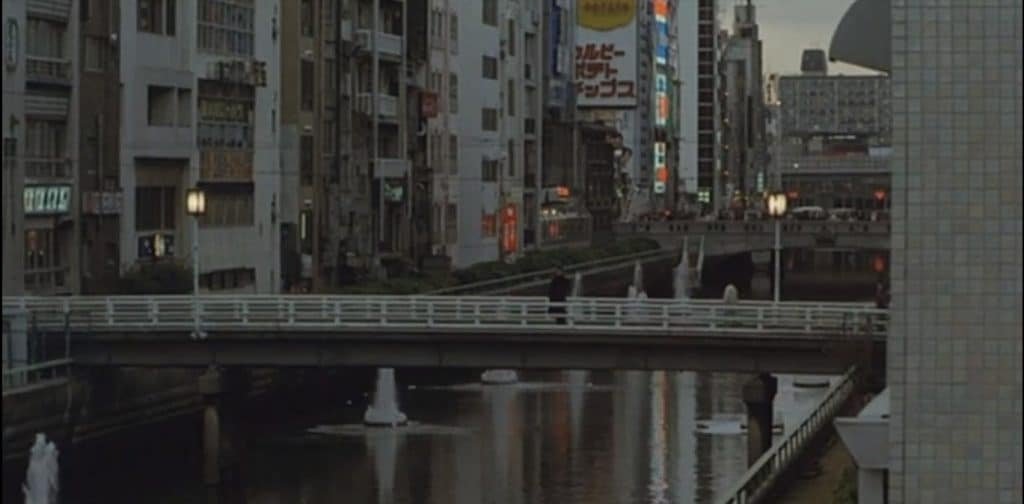
After the shots establishing Shuji’s presence in Osaka, the activities relocate to settings that could have (and most likely were) shot elsewhere. Things get bloody in what looks like the ruins of an abandoned grand theater…
Reception
Yasha was a multiple nominee at the Japanese Academy Awards in 1986: Takeshi Kitano as Best Supporting Actor, Yuko Tanaka as Best Supporting Actress, Daisaku Kimura for Best Cinematography as well as nominations for Best Lighting, Best Art Direction and Best Sound. It did win the award in the category of Best Editing for editor Akira Suzuki.
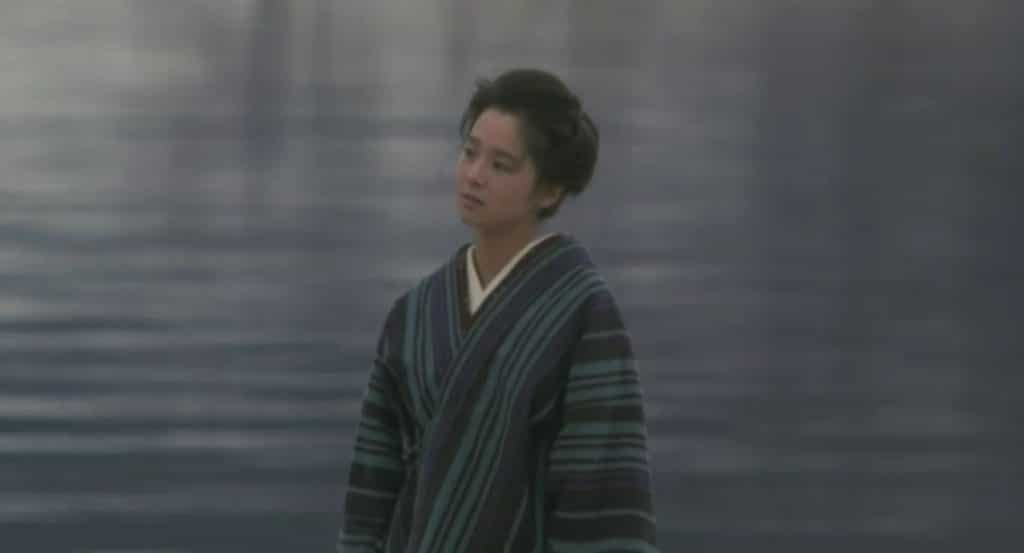
The initial box office revenue was 900 million Yen, turning in a nice profit for investor / distributor Toho.
Recent Trailers
More recently, various trailers advertising Yasha have been released. Those trailers tend to focus on the few violent segments of the movie… misleading the potential viewer.
Yasha is a psychological drama focusing on personal histories and personal relations, it’s set in a beautiful winter landscape. It’s not a yakuza bloodbath.
Yakuza bloodbaths can make great movies… but that would be another text another time.
























